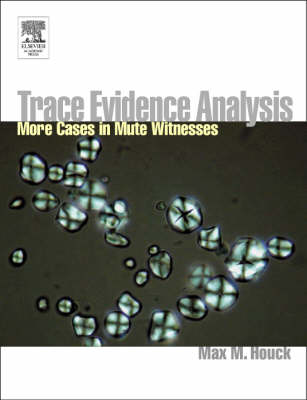Trace evidence is small, even microscopic remnants of materials found at a crime scene or on a victim. The term mute witnesses is commonly used to refer to these small bits of evidence such as paint smears, fibers, hair strands, dirt particles, glass fragments, and other items. Trace evidence can be used to tell the story of how a crime was committed and to identify and convict suspects. Recent improvements in the techniques used to collect and analyze trace evidence have played a key role in solving many cases that might have gone unsolved just a few years ago. Mute Witnesses: Trace Evidence Analysis presents intriguing case studies from well-recognized experts and bright young stars in the field. Each chapter presents the facts of one or more prominent cases (particularly cases where DNA evidence was not available or was inconclusive), follows the progress of the investigation and how trace evidence assisted, and highlights important aspects for teaching. The cases cover carpet nubs, hair and wig fibers, plastics in automobiles, glass, feathers, cross-transfer evidence, and more.
This unique book shows how the latest analysis techniques can provide new leads, detect evidence that has been transferred from one place to another, and closely link suspects, victims, and crime scenes. Numerous photographs and illustrations are included throughout the text. The material is written in a style that is accessible to trace analysts, crime scene specialists, police officers, lawyers, and students. This book is ideal for training, review, or general interest.
- ISBN10 0123567602
- ISBN13 9780123567604
- Publish Date 1 January 2001
- Publish Status Out of Print
- Out of Print 20 November 2009
- Publish Country US
- Publisher Elsevier Science Publishing Co Inc
- Imprint Academic Press Inc
- Format Hardcover
- Pages 192
- Language English
